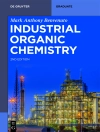Covers new developments in the field of mixed-valence electron transfer, including design, synthesis and applications of mixed-valence compounds with various inorganic and organic redox-active centers.
Tabla de materias
1. Introduction and Fundamentals of Mixed-Valence Chemistry
2 The Conceptual Understanding of Mixed-Valence Compounds and Its Extension to General Stereoisomerism
3 Quantum-Chemical Approaches to Treat Mixed-Valence Systems Realistically for Delocalized and Localized Situations
4 Mixed Valency in Ligand Bridged Diruthenium Complexes
5 Electronic Communication in Mixed-Valence (MV) Ethynyl, Butadiyndiyl and Polyynediyl Complexes of Iron, Ruthenium and Other Late Transition Metals
6 Electron Transfer in Mixed-Valence Ferrocenyl-Functionalized 5- and 6-Membered Heterocycles
7 Electronic Coupling and Electron Transfer in Mixed-Valence Systems with Covalently-Bonded Dimetal Units
8 Mixed-Valence Electron Transfer of Cyanide-Bridged Multimetallic Systems
9 Organic Mixed-Valence Systems: Towards Fundamental Understanding of Charge/Spin Transfer Materials
10 Mixed-Valence Complexes in Biological and Bio-Mimic Systems
11 Control of Electron Coupling and Electron Transfer through Non-Covalent Interactions in Mixed-Valence Systems
12 Stimulus-Responsive Mixed-Valence and Related Donor-Acceptor Systems
13 Mixed Valency in Extended Materials
14 Near-Infrared Electrochromism Based on Intervalence Charge Transfer
15 Manipulate Metal-to-Metal Charge Transfer towards Switchable Functions
Sobre el autor
Yu-Wu Zhong is Professor at Institute of Chemistry, Chinese Academy of Sciences (ICCAS). He obtained his Ph.D. Degree in 2004 from Shanghai Institute of Organic Chemistry, Chinese Academy of Sciences. After that, he worked as a postdoctoral associate at the University of Tokyo and Cornell University, respectively. In October 2009, he was awarded by the ‘100 talent’ program of Chinese Academy of Sciences and joined ICCAS to start his independent career. He has authored over 160 scientific publications and received numerous scientific awards, including the National Science Fund for Distinguished Young Scholars of China in 2019 and the Chinese Chemical Society-Evonik Chemical Innovation Award for Distinguished Scientist (2019-2020). His research interests focus on the synthesis and applications of electro- and photo-functional molecular materials.
Chun Yuan Liu received his M.S. degree in chemistry from Sun Yat-sen University in 1988 and Ph.D. degree from Texas A&M University in 2005 under the supervision of F. Albert Cotton. In his professional career, he chaired the chemistry department at Xiangtan Normal university (1992-1996) and at Jinan university (2011-2017) and worked as a researcher with Daryle H. Busch at the University of Kansas (1996-2000) and as a full professor at Tongji University (2006-2011). His research interests include coordination chemistry, metal-metal bonds, mixed-valency, electron transfer, molecular electronics and photocatalyst.
Jeff Reimers studied organic spectroscopy under Ian Ross and Gad Fischer before doing a Ph D with Bob Watts on the structure, thermodynamics, and spectroscopy of water and ice. He then studied semiclassical quantum mechanics in USA under Kent Wilson and Rick Heller, before returning to Australia to be an ARC Research Fellow from 1985 to 2010 at the University of Sydney. There he collaborated extensively with Noel Hush and Max Crossley on problems involving electron transfer, molecular electronics, porphyrin chemistry, self-assembly, electronic-structure theory, and photosynthesis. In 2014 he moved to a joint appointment at University of Technology Sydney and Shanghai University, focusing mostly on basic chemistry, nanophotonics, and molecular electronics. His work spans a wide range of chemical applications, from biochemical function to electronic devices to the origins of consciousness. He has received the RACI Physical Chemistry Division Medal and the H.G. Smith Medal, the David Craig Medal of the Australian Academy of Science, and the Shanghai Magnolia Medal; he is a Fellow of the RACI, the Royal Society of NSW, and the Australian Academy of Science.












